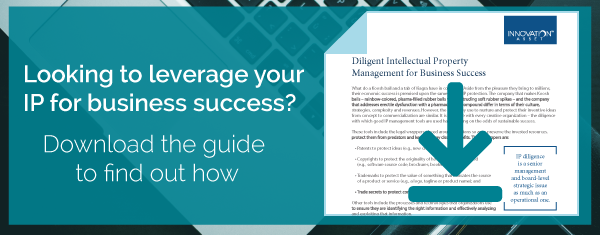In today’s rapidly changing marketplace, innovation has become critical for companies both big and small. The question is: how do we quantify innovation?
While companies like Google and Apple may appear to be among the most innovative in the public eye, neither company cracked the top 10 in terms of invention output in 2013 by number of patents earned.
Of course, patents are not necessarily the sole indicator of a company’s innovation level, but they do offer one of the few publicly available metrics. According to the U.S. Patent Office, these were the most heavily patented companies in 2013:
- IBM: 6,478 patents
- Samsung: 4,676 patents
- Canon: 3,825 patents
- Sony: 3,098 patents
- Microsoft: 2,660 patents
In many instances, the companies at the top of this list have reliably maintained their position—like IBM, which has earned the top spot for the last 21 years, or Canon, which has been in the top five for the last 20 years. So how are patent leaders keeping their edge? Here, we’ll explore the strategies and practices of these five patent giants to unearth the common threads that are consistently driving patent output, year after year.
1) Explore Alternate Applications to Build a Larger, More Diverse Portfolio.
Although each of the companies we mentioned is known for a particular type of product (e.g., Sony for consumer electronics), they actually hold patents that can be applied to a variety of industries.
For example, Canon discovered that one of the technologies they developed for use in its personal, handheld cameras could be used in a new endoscopic medical procedure. Canon’s research has stretched across industries to find additional patentable, profitable uses; they’ve also made some remarkable advances in robotics technology that they’ve patented for use in a variety of applications.
So while you may be exploring technologies that support only your core offering, don’t ignore their potential for unexpected and unintended applications.
IBM wholeheartedly embraces this idea in their patent strategy. Michael Karasick, a vice president and computer scientist at the IBM Almaden Research Center has commented that IBM patents typically cover “reusable technologies that can be applied to various disciplines.” Case in point: their Watson technology, which is being explored for a diverse set of applications—from medical uses to fueling cloud-based apps.
2) Form Smart, Mutually Beneficial Partnerships to Accelerate Innovation.
Companies like Canon are beginning to form strong strategic partnerships with other innovative companies with desirable IP portfolios. They recently signed a patent sharing agreement with Microsoft, leading many to believe that Canon’s camera technology may soon be powering all of Microsoft’s future devices.
"This collaborative approach with Canon allows us to deliver inventive technologies that benefit consumers around the world," Microsoft IP Licensing general manager Nick Psyhogeos said in a statement. "Microsoft believes cooperative licensing is an effective way to accelerate innovation while reducing patent disputes." In the agreement, Canon also gains the right to use some of Microsoft’s intellectual property.
Samsung is forming a similar patent cross-licensing agreement with Cisco. Each company gains access to the other’s industry leading patent portfolio, covering a broad range of products and technologies. "Innovation is stifled all too often in today's overly-litigious environment," said Dan Lang, Cisco's Vice President of Intellectual Property. "By cross-licensing our patent portfolios, we are taking important steps to reverse the trend and advance innovation and freedom of operation."
Sony also has several patent cross-licensing agreements in place with Technicolor, Aptina and Rovi.
3) Invest Heavily in Research and Development.
If innovation is your end game, your R&D department is your ticket there. IBM spent more than $6 billion a year on R&D globally from 2010 to 2012, with more than 8,000 inventors in 47 U.S. states and 41 countries contributing to their 2013 patents.
Additionally, they are aggressively investing in research for their Watson supercomputer, famously known for defeating human Jeopardy! champions in 2011. They’ve allocated $1 billion in R&D for that project alone, believing that further research will uncover a wide variety of profitable applications, including pharmaceutical drug development and testing.
Microsoft has also beefed up its R&D funding. They increased their investment in research and development from $9 billion in 2011 to more than $10 billion in 2013. As a result, they increased their patent output by nearly 9%, jumping from the #6 spot in 2011 to #5 in 2013.
4) Maximize Employee Collaboration.
IBM faciliates the formation of multidisciplinary innovation teams with a diverse set of skills and perspectives across various industries. Each team generally includes computer scientists, mathematicians and statisticians, but they add additional team members depending on the market vertical. For health care, they may include biologists, geneticists and medical researchers; and for oil and gas research, teams may include geologists and geophysicists. This collaboration among researchers helps IBM discover new ways of applying technology to real world problems.
Sony has deployed technology to better aid their global employee population in collaborating and communicating. They created more efficient tools for sharing information and more advanced tools for navigating this information database—helping employees tap into the expert resources within the company. They also added wiki capabilities to capture employees’ insights and comments, as well as search features to help new employees identify people who have similar innovation interests or work on similar projects. These features have helped employees work and collaborate more effectively, helping Sony better leverage the potential of its employees for innovation.
While the term “innovation” may be somewhat subjective, patents provide a concrete way to demonstrate invention output—which in turn, can help companies evaluate progress and assert industry leadership.
When patents are leveraged correctly, they can also be a source of significant profit, helping you extract more value out of your portfolio. IBM earns $1 billion a year from licensing agreements and Microsoft earned about $3.4 billion from its Android patents in 2013 alone! It’s this combination of high invention output and smart strategy that’s helping these companies stay at the top of their game.
Luckily, smart tools like Decipher Innovation make it easy to combine the two— helping your company make faster and better decisions. From speeding up the invention disclosure process to facilitating more effective global collaboration, Decipher provides companies with the tools they need to maximize their innovation potential.
*All trademarks used belong to their respective owners. Innovation Asset Group is not affiliated with them and all information provided comes from publicly available sources.


